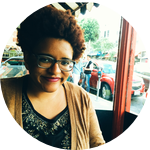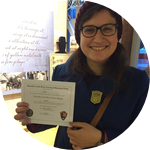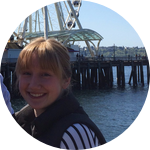About This Project
The Pacific Science Center is attempting to modernize the exhibit Dinosaurs: A Journey Through Time by including a live component. This evaluation considered how the addition of live eggs and chicks changed guests’ use and movement in the exhibit before and after their addition as well as how the inclusion of eggs and chicks changed guests’ conversations before and after their addition.
Ask the Scientists
Join The DiscussionWhat is the context of this research?
This evaluation is a partnership between our team from the University of Washington Museology Program and the Pacific Science Center in Seattle, WA. The purpose of the study is to understand how visitors engage with the Dinosaurs: A Journey Through Time exhibit and to determine if and how the inclusion of live components affects their experience. There have been several museums who have created exhibits with living components that would typically not have such elements, like the Museum of Science and Industry in Chicago. Studies have found that adding live components to exhibits has led to more time being spent in the space and a more enjoyable visit with richer conversations about the subject matter (Allen, 2007; Allen, 2004)
What is the significance of this project?
Many science centers are grappling with how to update exhibits that have limitations, such as notable or iconic exhibits. This is of particular importance when scientific discoveries have made some of the information outdated. One path science centers are taking is to add a living component into a formerly static exhibit. This is the case at the Pacific Science Center in their iconic dinosaur exhibit. Eggs and chicks are being added to update the science and draw connections between dinosaurs and birds. This study is assessing the affect these living components have on the experience of visitors.
What are the goals of the project?
This project started in September 2015 as part of a year long project. The museum decided that they wanted to see how the space was being used in 3 different treatments: As it is currently without any living component, with the addition of eggs, and with the addition of chicks. Data is currently being collected using two different observation instruments: Timing and tracking is a way to see what people do in the space. To understand the types of conversations people were having in the exhibit, we created a listening guide to record conversations in the space. Data collection will end once the chicks leave for their new homes. We will analyze and create a report with the findings to present to the site institution and at the Visitor Studies Association Conference this coming July.
Budget
As part of this study, we believe it is important to share our findings with the rest of the museum field. The Visitor Studies Association 2016 conference is the ideal venue to share our findings with this community. This funding will help us attend this conference by covering the registration costs as well lodging and parts of our airfare to get from Seattle, WA to Boston, MA. Without this money it will be difficult for us, as recent graduates, to pay for this opportunity, as well as, be able to share our year-long evaluation project with others in our field.
Meet the Team
Team Bio
Team "RAWR!tweet tweet" is one of 4 student evaluation groups part of UW Museology's Museum Evaluation Group. They have worked together on two evaluation projects during their time as a team. They are also masters of data visualization.
Sena M. M. Dawes
Sena Dawes is a second-year Master's student in the Museology Program at the University of Washington-Seattle. She fell into this museum world by way of Anthropology and found that museum evaluation is one of the coolest part of museums. Evaluation was the reason she applied to this Master’s program and is the reason why this project (a requirement of a museum evaluation specialization) is happening. Even though school has pretty much consumed her life, Sena still makes time for watching copious amounts of television and playing the bass in a campus orchestra once a week.
Calie Holden
Calie Holden is a second year Master's student in Museology at the University of Washington. While getting a degree in history, she became interested in entering the museum field. Through the museum evaluation, Calie found a way to combine interests in research and museums.
Michelle Reichelt
Michelle Reichelt is a second year graduate student in the University of Washington Museology Department. Her interests include development and evaluation efforts.
Lab Notes
Nothing posted yet.
Project Backers
- 11Backers
- 35%Funded
- $520Total Donations
- $47.27Average Donation


